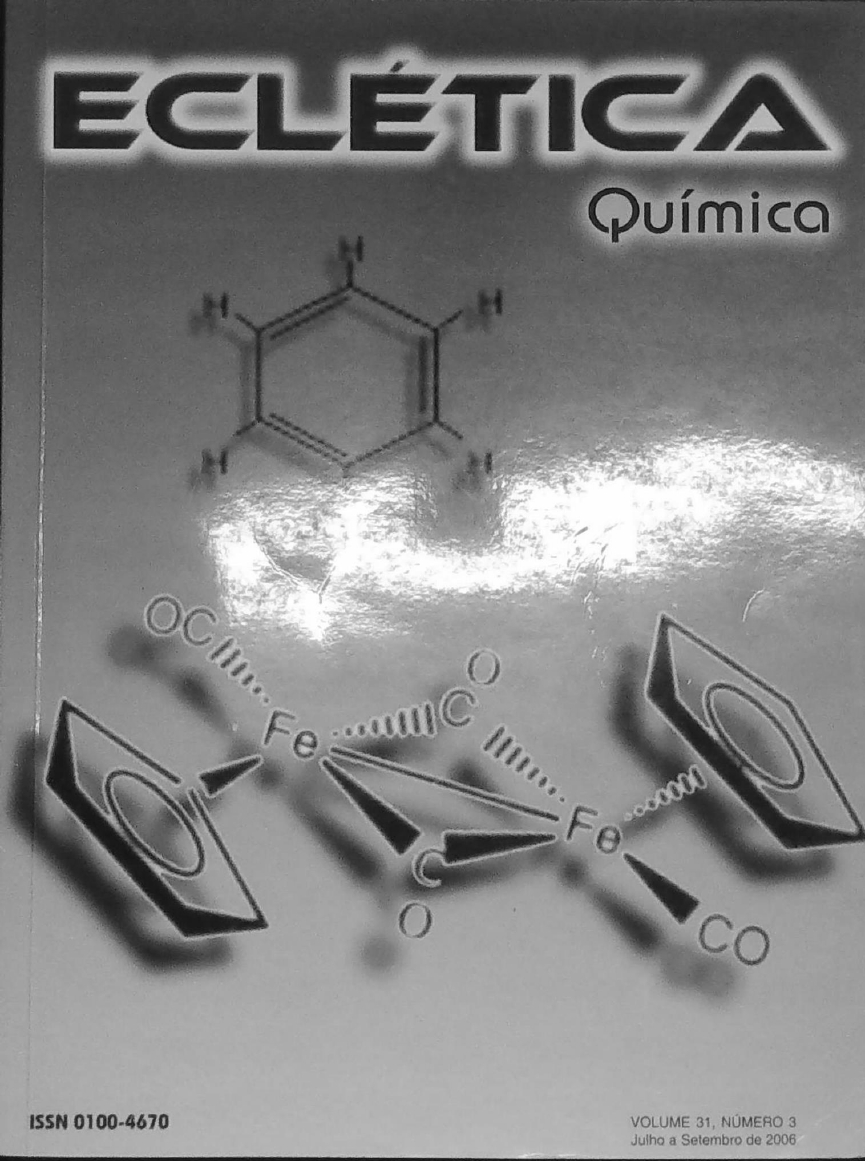Abstract
Complexes of Ni(II) 2,3-, 3,5- and 2,6-dimethoxybenzoates have been synthesized, theirphysico-chemical properties have been compared and the influence of the position of –OCH3 sub-
stituent on their properties investigated. The analysed compounds are crystalline, hydrated salts with
green colour. The carboxylate ions show a bidentate chelating or bridging coordination modes. The
thermal stabilities of Ni(II) dimethoxybenzoates were investigated in air in the range of 293-1173 K.
The complexes decompose in three steps, yelding the NiO as the final product of decomposition. Their
solubilities in water at 293 K are in the order of 10 -2 -10 -4 mol⋅dm -3 . The magnetic susceptibilities for
the analysed dimethoxybenzoates of Ni(II) were measured over the range of 76-303 K and the mag-
netic moments were calculated. The results reveal that the complexes are the high-spin ones and the
ligands form the weak electrostatic field in the octahedral coordination sphere of the central Ni(II) ion.
The various position –OCH3 groups in benzene ring cause the different steric, mesomeric and induc-
tive effects on the electron density in benzene ring.
References
S. L. Erre, G. Micera, F. Cariati, G. Ciani, A. Sironi, H.
Kozlowski,
and J. Baranowski, J. Chem. Soc., Dalton Trans.
́
(1988) 363.
S. L. Erre, G. Micera, and F. Cariati, Polyhedron 6 (1987)
W. Ferenc, A. Walków-Dziewulska, and J. Sarzynski,
́ J.
Serb. Chem. Soc. 70 (2005) 1089.
L. D. Pethe, and B. D. Mali, Indian J. Chem. 16 (1978)
Gmelin Handbook of Inorganic Chemistry, Springer
Verlag, Berlin 1984.
M. Georgieva, Anal. Chim. Acta 101 (1978) 139.
L. D. Pethe, and V. G. Hirve, Indian J. Chem. 22A (1983)
Beilsteins Handbuch der Organischen Chemie, Bd IX,
Verlag von Julius Springer, Berlin, 1927, p 405.
W. Ferenc, A. Walków-Dziewulska, and P. Sadowski,
Chem. Pap. 59 (2005) 324.
W. Ferenc, A. Walków-Dziewulska, and P. Sadowski, J.
Therm. Anal. Cal. 82 (2005) 365.
W. Ferenc, A. Walków-Dziewulska, P. Sadowski, and J.
Chrusciel,
́ J. Serb. Chem. Soc. 70 (2005) 833.
W. Ferenc, A. Walków-Dziewulska, and J. Sarzynski,
́
Eclet. Quim. 31(2) (2006) 17.
B. N. Figgs, and R. S. Nyholm, J. Chem. Soc. 4 (1958)
E. Konig,
Magnetic Properties of Coordination and
́ ́
Organometallic Transition Metal Compounds, Springer,
Verlag, Berlin, 1966.
K. Burger, Coordination Chemistry: Experimental
Methods, Akademiai Kiadó, Budapest, 1973.
L. J. Bellamy, The Infrared Spectra of Complex
Molecules, Chapman and Hull, London, 1975.
K. Nakamoto, Infrared and Raman Spectra of Inorganic
and Coordination Compounds, Wiley, Toronto, 1997.
M. Silverstein, and G. C. Bassler, Spectroscopic Methods
of Inorganic Compounds. Identifications, Polish Scientific
Publisher, Warsaw, 1970.
A. Cross, A. R. Jones, An Introduction in Practical
Infrared Spectroscopy, Butterworths, London, 1969.
R. C. Mehrotra, and R. Bohra, Metal Carboxylates,
Academic Press, London, 1983.
B. S. Manhas, and A. K. Trikha, J. Indian Chem. Soc. 59
(1982) 315.
E. ́ Lagiewka, Z. Bojarski, X-Ray Structural Analysis,
Polish Scientific Publisher, Warsaw, 1988.
A. V. Nikolaev, V. A. Logvinenko, and L. L. Myachina,
Thermal Analysis, Academic Press, New York, vol. 2, 1969.
B. Singh, B. V. Agarwala, P. L. Mourya, and A. K. Dey,
J. Indian Chem. Soc., 59 (1992) 1130.
F. Paulik, Special Trends in Thermal Analysis, Wiley,
Chechester, 1995.
H. A. Staab, Einführung in theoretische organische
Chemie, Verlag Chemie, Weinheim, 1962, p.355.
J. Shorter, Correlation Analysis in Organic Chemistry. An
Introduction to Linear Free-Energy Relationship, Clarendon
Press, Oxford, 1973, p.69.
G. Kupryszewski, Wstep do chemii organicznej, PWN,
Warszawa 1980, p.392 (in Polish)
C. I. O’Connor, Progress in Inorganic Chemistry, Wiley,
New York, 1982.
C. Benelli, A. Caneschi, D. Gatteschi, J. Laugier, L.
Pardi, and P. Rey, Inorg. Chem. 28 (1989) 275.
C. Benelli, A. Caneschi, D. Gatteschi, J. Laugier, and P.
Rey, Angew. Chem. 26 (1989) 913.
M. Hvastijova, J. Kohout, J. Mrozinski,
and J. Jäger,
́
Polish J. Chem. 69 (1995) 852.
A. Earnshaw, Introduction to Magnetochemistry,
Academic Press, London, 1968.
J. W. Krajewski, Z. Urbanczyk-Lipkowska,
and P.
́
Gluzinski,
́ Polish J. Chem. 54 (1980) 2189.
A. P. Ginsberg, Inorg. Chim. Acta Rev. 5 (1971) 45.
D. M. Duggan and D. N. Hendrickson, Ibid. 12 (1974)
Ch. I. O’Connor, E. D. Stevens and S. A. Friedberg,
Phys. Rev. B28 (1983) 2668.

This work is licensed under a Creative Commons Attribution 4.0 International License.
Copyright (c) 2018 Eclética Química Journal




